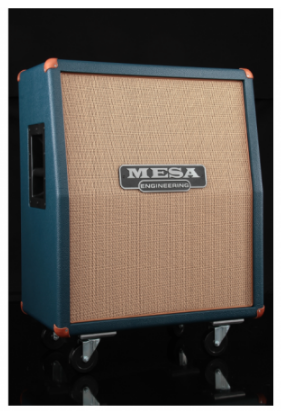Products Category
- FM Transmitter
- 0-50w 50w-1000w 2kw-10kw 10kw+
- TV Transmitter
- 0-50w 50-1kw 2kw-10kw
- FM Antenna
- TV Antenna
- Antenna Accessory
- Cable Connector Power Splitter Dummy Load
- RF Transistor
- Power Supply
- Audio Equipments
- DTV Front End Equipment
- Link System
- STL system Microwave Link system
- FM Radio
- Power Meter
- Other Products
- Special for Coronavirus
Products Tags
Fmuser Sites
- es.fmuser.net
- it.fmuser.net
- fr.fmuser.net
- de.fmuser.net
- af.fmuser.net ->Afrikaans
- sq.fmuser.net ->Albanian
- ar.fmuser.net ->Arabic
- hy.fmuser.net ->Armenian
- az.fmuser.net ->Azerbaijani
- eu.fmuser.net ->Basque
- be.fmuser.net ->Belarusian
- bg.fmuser.net ->Bulgarian
- ca.fmuser.net ->Catalan
- zh-CN.fmuser.net ->Chinese (Simplified)
- zh-TW.fmuser.net ->Chinese (Traditional)
- hr.fmuser.net ->Croatian
- cs.fmuser.net ->Czech
- da.fmuser.net ->Danish
- nl.fmuser.net ->Dutch
- et.fmuser.net ->Estonian
- tl.fmuser.net ->Filipino
- fi.fmuser.net ->Finnish
- fr.fmuser.net ->French
- gl.fmuser.net ->Galician
- ka.fmuser.net ->Georgian
- de.fmuser.net ->German
- el.fmuser.net ->Greek
- ht.fmuser.net ->Haitian Creole
- iw.fmuser.net ->Hebrew
- hi.fmuser.net ->Hindi
- hu.fmuser.net ->Hungarian
- is.fmuser.net ->Icelandic
- id.fmuser.net ->Indonesian
- ga.fmuser.net ->Irish
- it.fmuser.net ->Italian
- ja.fmuser.net ->Japanese
- ko.fmuser.net ->Korean
- lv.fmuser.net ->Latvian
- lt.fmuser.net ->Lithuanian
- mk.fmuser.net ->Macedonian
- ms.fmuser.net ->Malay
- mt.fmuser.net ->Maltese
- no.fmuser.net ->Norwegian
- fa.fmuser.net ->Persian
- pl.fmuser.net ->Polish
- pt.fmuser.net ->Portuguese
- ro.fmuser.net ->Romanian
- ru.fmuser.net ->Russian
- sr.fmuser.net ->Serbian
- sk.fmuser.net ->Slovak
- sl.fmuser.net ->Slovenian
- es.fmuser.net ->Spanish
- sw.fmuser.net ->Swahili
- sv.fmuser.net ->Swedish
- th.fmuser.net ->Thai
- tr.fmuser.net ->Turkish
- uk.fmuser.net ->Ukrainian
- ur.fmuser.net ->Urdu
- vi.fmuser.net ->Vietnamese
- cy.fmuser.net ->Welsh
- yi.fmuser.net ->Yiddish
How To Choose a Guitar Speaker Cabinet – Part 4
Date:2020/1/3 17:34:02 Hits:

The effect that different speaker wiring options and total speaker impedance load have on your overall tone is subtle, but noticeable. Where wiring and impedance matter most is in the safety of your amplifier. Using the wrong impedance can seriously damage your amplifier and knowing why and how can ultimately save a lot of headaches and dollars. By utilizing different wiring schemes, a variety of speaker combinations can match the impedance requirement of your amp. Knowing the principles involved and how to figure the math can also allow you to use the speaker combination of your choice.
Impedance
Series and Parallel Wiring
Wiring
Connect the positive terminal of the first speaker to the positive terminal of the amplifier
Connect the negative terminal of the first speaker to the positive terminal of the second speaker
Connect the negative terminal of the second speaker to the negative terminal of the amplifier.
The negative and positive amplifier connections in a typical guitar set-up are through a 1/4″ jack and cable. The tip connector is normally positive and the ring connector is negative. To figure the impedance load of speakers wired in series, simply add their values together. For example, two 8-ohm speakers wired in series equals a 16-ohm total load.
Connect the positive amplifier terminal to both of the positive terminals of the speakers
Connect the negative amplifier terminal to both of the negative speaker terminals
If all of the speakers individually have the same impedance, divide a single speaker’s impedance by the number of speakers to find the total impedance. For example, two 8-ohm speakers wired in parallel is a total of 4 ohms, or eight divided by two.
Series/parallel is another wiring option, most notably used in vintage 4×12 Marshall cabinets. This allows for the total ohm load of all four connected speakers to be the same as one of the individual speakers. For example: four 16-ohm speakers connected in series/parallel equals a total load of 16 ohms. This wiring scenario has the best qualities of series and parallel, but it does take four speakers to achieve it.
Speaker #1 positive terminal connected to amplifier positive terminal
Speaker #1 negative terminal connected to speaker #2 positive terminalSpeaker #2 negative terminal connected to amplifier negative terminal
Repeat the process, substituting speaker #3 for #1 and #4 for #2:
Speaker #3 positive terminal connected to amplifier positive terminal
Speaker #3 negative terminal connected to speaker #4 positive terminal
Speaker #4 negative terminal connected to amplifier negative terminal
Understanding the basic principles of impedance and how to wire speakers can allow you to confidently and safely experiment with a variety of combinations. While this process requires you to apply specific equations, ultimately your ears will be your best guide to the goal of good tone.
Leave a message
Message List
Comments Loading...





